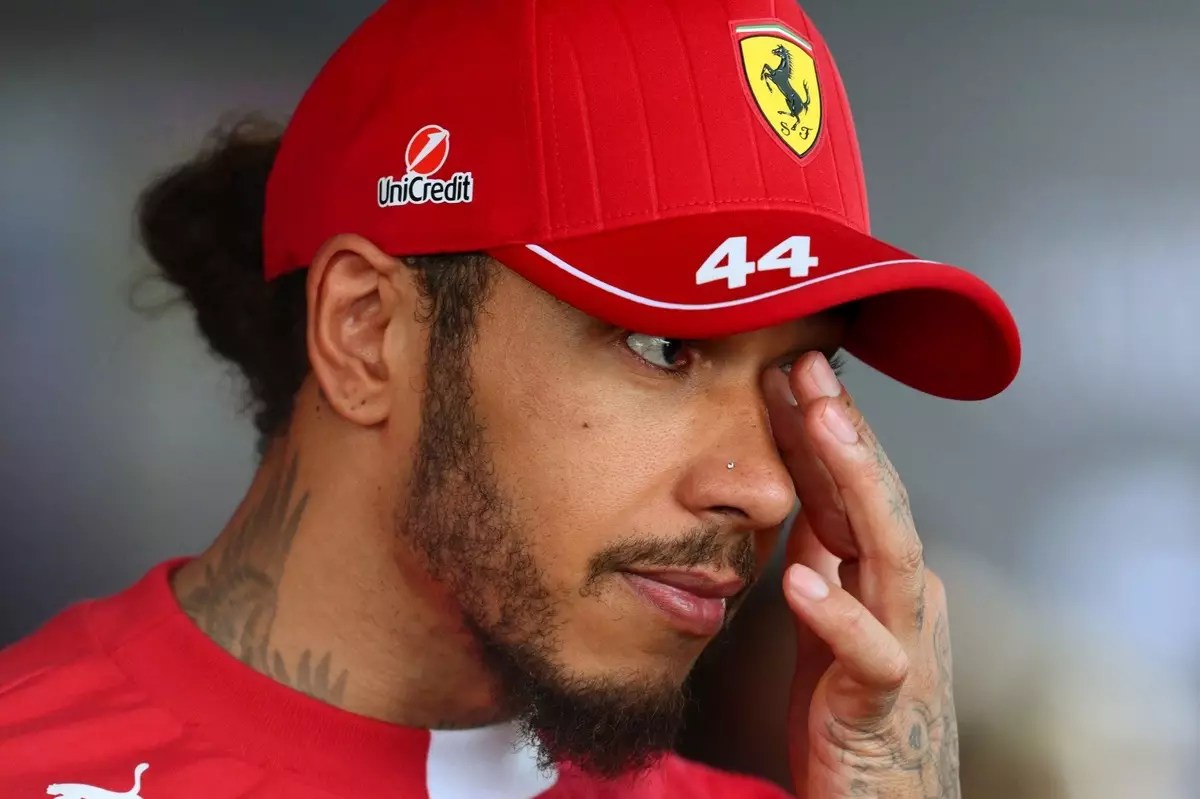In the high-stakes arena of Formula 1, setbacks are not just inevitable—they are almost mandatory for every seasoned driver aiming for greatness. Lewis Hamilton, a seven-time world champion, exemplifies this relentless pursuit of excellence, even when confronted with the harsh realities of failure. His recent struggles at the Hungarian Grand Prix serve as a stark reminder that even the most decorated athletes face moments of doubt and disappointment. While critics might swiftly judge his performance, a deeper assessment reveals that such adversity is essential for growth. It exposes vulnerabilities, tests resilience, and ultimately fosters a stronger persona, both on and off the track.
Hamilton’s precipitous exit in Q2, relegating him to a poor starting position, epitomizes the unpredictable nature of racing. With a grid position that limited his ability to maneuver, Hamilton found himself ensnared in traffic, unable to capitalize on his talent. The frustration he expressed post-race underscores a truth shared by many elite competitors: the emotional toll of unmet expectations can cloud judgment and tempering such reactions is a testament to a driver’s mental strength. Yet, rather than succumbing to despair, Hamilton’s experience highlights that setbacks are, at their core, opportunities to reassess, recalibrate, and reignite the fire for future battles.
The Human Side of Competition: Passion, Frustration, and Persistence
What distinguishes Hamilton from many of his peers is his unwavering demand for perfection. Following the Hungarian race, his comments veered into self-critical territory, even suggesting Ferrari consider a different driver—an indication of deep frustration. However, Fred Vasseur’s nuanced perspective offers crucial insight: beneath the surface lies an athlete driven by an insatiable hunger for victory. His feelings are not signs of weakness but rather visceral reflections of his relentless ambition.
Vasseur’s reassurance that Hamilton remains demotivated rather than demoralized is an important distinction. It paints a picture of a competitor who, despite contemporary struggles, retains the inner fuel necessary for comeback. The notion that even legends like Hamilton experience moments of self-doubt should not be seen as a crack in their armor but as authentic expressions of human vulnerability. Their willingness to confront disappointment head-on is what separates champions from mere contenders. Hamilton’s willingness to express his frustrations openly could be harnessed as a catalyst for eventual triumph rather than viewed solely as a sign of crisis.
The Subtle Dynamics of Performance and Expectations
Examining the technical aspects, Vasseur points out that Hamilton’s weekend was more about environment and circumstances than a fundamental lack of skill. Missing out on Q2 by a fraction of a second in a midfield context does not diminish Hamilton’s talent but underscores how razor-thin the margins are in Formula 1. His team’s analysis implies that luck, timing, and minute performance variances can dramatically alter outcomes in this sport.
Furthermore, the discrepancy between Hamilton and Leclerc’s qualifying performances encapsulates the unpredictable elements of racing. While Charles Leclerc managed to secure pole position, Hamilton narrowly missed out, reflecting the delicate balance of conditions, machinery, and driver execution. These fleeting differences serve as stark reminders that even a seven-time world champion must navigate a complex web of variables beyond mere skill. The true test lies in how well a driver and team adapt to these fluctuations—a task Hamilton has repeatedly proven capable of doing.
The Power of Mindset in Overcoming Obstacles
What is most compelling about Hamilton’s current phase is not just his technical battles but his mental game. The capacity to endure criticism, handle disappointment, and maintain focus on future success is the hallmark of a true champion. Vasseur’s comments about Hamilton being demanding but not demotivated illustrate a vital mindset: that setbacks are temporary, and resilience must be cultivated consciously.
The racing world often celebrates the moment of victory but tends to overlook the silent, grueling internal battles faced by drivers during downturns. Hamilton’s fight back will be shaped not just by car performance improvements but by his unwavering mental commitment. His experience teaches us that perseverance, patience, and self-belief are powerful tools in transforming setbacks into comebacks.
In essence, Hamilton embodies the relentless spirit needed to thrive in a sport defined by its unpredictability and fierce competition. His current struggles, while visible and emotionally intense, are merely chapters in a larger narrative of continuous growth and resilience. Harnessing this adversity as motivation rather than retreating from it will ultimately forge a legacy not just of victory but of unwavering tenacity.

